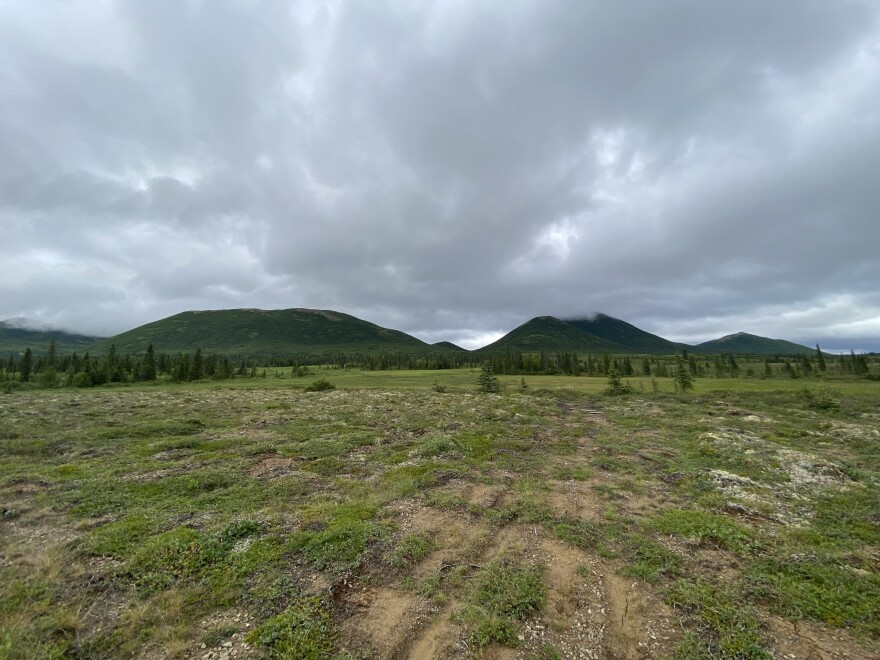Nonresident hunters must now complete an orientation on meat care and antler identification before hunting moose anywhere in Alaska.
The Alaska Department of Fish and Game adopted the statewide regulation at its March Board of Game meeting.
Bristol Bay Unit 17B was one of the only units in Alaska to have already had this regulation in place, but for other units in the area, this fall's moose hunt will be the first time the regulation will be enforced. Dillingham area management biologist John Landsiedel joins KDLG to tell us more.
Landsiedel: So the regulation that was adopted by the Alaska Board of Game this last winter requires all nonresident hunters statewide to watch a couple of videos to help inform them while they're moose hunting in Alaska. The first is a field care of big game meat, which helps them understand some of the tricks and tactics they can do to take care of the meat from spoiling while they're in the field for potentially, you know, long durations of time. The second video is “Is this moose legal?” And that video helps walk through the antler growth rates and morphometrics of moose. We have a regulation in 17 B that restricts nonresidents from harvesting any moose unless it is a bull with 50-inch antlers or greater, or four brow tines or more. So this video helps inform the public on how to judge whether a moose is 50 inches wide or better, and also where the brow tine is located on the moose antler. And really, it just emphasizes taking your time to identify what you’re attempting to harvest before you pull the trigger. In addition to that, meat care is really, really important, and when you're in the field, you often deal with less than adequate or ideal conditions to take care of meat, and you want to keep it cool and you want to keep it dry. And some hunters haven't faced those issues coming up from the lower 48, and so this video helps walk those nonresident hunters who may harvest a moose into taking care of their meat properly, one, because it's the right thing to do, and two, so they aren't in violation of any regulation.
Sutherland: This requirement was in place in unit 17 B already, and now it is statewide. Can you tell me a little bit about how this has worked in the past in that unit?
Landsiedel: Most nonresident hunters who come to hunt Unit 17 B for moose have had to take this course in the past already. It's not something you have to take every year. So if someone's hunted unit 17 B previously, as long as they have proof of completion still printed, they don't have to take it again. We also have limited hunting in unit 17, which is primarily the Togiac drainage. Historically, we've issued 20 permits, except for one year when we issued 30 permits. Those hunters are now all required to take this nonresident moose orientation course as well. Previously, they weren't, but starting this fall, they will all have to be required to take that.
Sutherland: If somebody is hunting in another unit and has taken this, does the same orientation apply to every unit across Alaska?
Landsiedel: Yeah, it applies to every unit that offers nonresident moose hunting opportunities. For example, in unit 17 C, which is the unit that Dillingham is within, there's no nonresident moose opportunity. But there are nonresident moose hunting seasons in neighboring units, nine to the east, 19 to the north and 18 to the west. And if someone's hunted there previously, or they've hunted 17 B previously, and they've taken the required educational courses, then they can use that certificate, certificate of completion, to go hunt unit 18 or unit 19 as well.
Sutherland: What prompted this requirement statewide?
Landsiedel: Really, this regulation is trying to help the public for making a mistake that may cost them the moose that they harvested. If they harvested an animal that didn't meet the harvest restrictions, they're likely to confiscate their antlers and their meat, and so that's sort of like the enforcement, social portion of it. But also, you know, those regulations exist to harvest older mature males, which are more disposable in the population. And so, looking at it from the biological standpoint, we can have a continued higher harvest if we're harvesting those older age class males, rather than if we're harvesting females or potential younger males.
Sutherland: Will this have any impact on resident hunters?
Landsiedel: No, I don't believe it will change anything, especially for local residents of unit 17. We have an any bull permit available right now in Dillingham, RM 583, for unit 17 B and C, and that offers them more opportunity to harvest any antlered moose.
I would encourage people to go watch the videos. I think there's something to be learned, especially in terms of meat care and keeping it dry. And there's always something to learn. So I would encourage people to go watch that if it interests them.
Alaska Department of Fish and Game Orientation videos can be found here.



